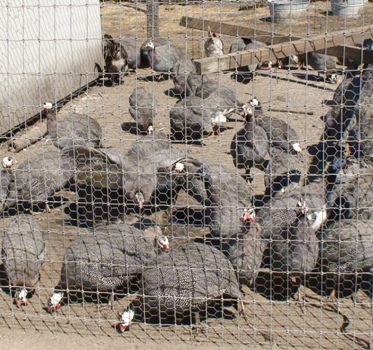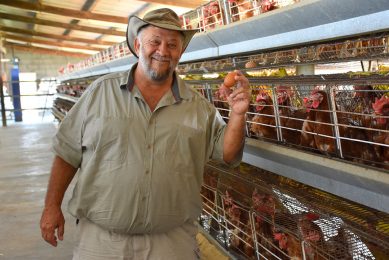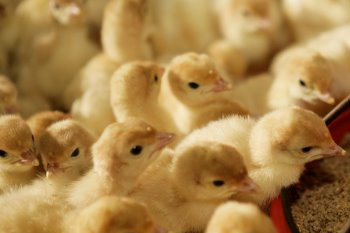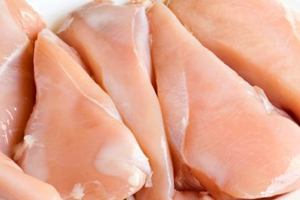Guinea fowl farming becomes popular in Botswana

Livestock growers in the Southern African country of Botswana have taken guinea fowl production as a sideline to their core farming activity. These birds can, compared to other poultry species, be kept at a low cost and require minimum labour and management.
By Alfred Sayila, Lusaka, Zambia
In recent years there has been a steady increase in the number of young farmers who have ventured into guinea fowl growing in Botswana. Throughout the arid, desert country their number is estimated at about 580. The rise in this type of poultry has been predominantly noted in rural areas where most of the peasant and small-scale livestock farmers live.
Most of these guinea fowl producers are already involved in other farming activities, notably cattle rearing. This is also the case in the rural district of Ghanzi. Here, most of the youthful cattle farmers have entered into guinea fowl production.
A poultry sector with potential
The Ministry of Agriculture’s Department of Animal Production in Botswana believes that guinea fowl farming, although it is still in its infancy in the country, is promising to become an important poultry sector within the coming years. Statistics obtained at the Ministry of Agriculture in Gaborone, the capital of Botswana, show that guinea fowl production throughout the country is estimated at about 20,000 breeding stock. This number, however, is expected to rise as more farmers join this parallel poultry sector. Based on this trend, experts estimate that guinea fowl production may reach more than 600,000 birds annually within the next five years.
Government experts in Botswana encourage youthful farmers to venture into guinea fowl growing as a major livestock farming occupation. They also promise financial and logistical support. Here, planners in the Ministry of Agriculture and the Department of Youth and Culture deliberately target young farmers in pilot districts where some form of livestock farming already exists.
Grants for young farmers
“It may take some time, but guinea fowl farming will soon become an important poultry sector and has a bright future in this country,” says Kebabope Laletsang, Director of statistics and planning at the Ministry of Agriculture. She says that efforts are being made to encourage people of all ages, both male and female, to venture into this type of livestock farming. Laletsang highly praised the Department of Youth and Culture for taking the initiative to support young people in the livestock and veterinary rural districts of the country to go into guinea fowl growing. The Department has already provided about 50,000 Botswana Pula (local currency, which is equivalent to about US$7,600) in grants to more than 200 young farmers. It is believed that others will also soon access financial support from the government.
Marketing a bottleneck
The Botswana guinea fowl sector is currently facing the problem of marketing. Neither guinea fowl meat nor eggs are a favourite menu item for the majority of people living in the country and it will take some time before it appeals to
Free-range or housed?
Some of the serious livestock farmers who want to venture into commercial guinea fowl breeding have expressed the need to procure modern hatching and incubating equipment to produce quality birds. They deplore natural methods of incubation where chicken parents are used to hatch guinea fowl eggs. This kind of incubation method means that a lot of eggs are lost, which makes it difficult for the farmers to brake even for their newly found livestock business. Given the high reproduction rate, where a single guinea fowl lays up to 150 eggs per year, modern incubation methods and equipment would greatly help rural farmers to increase production. When doing so, however, the next problem arises: only very few livestock farmers have the capacity to invest in modern (but expensive) breeding units as the majority of them depend on free-range production methods.
Since most if not all rural guinea fowl growers are small-scale farmers they prefer to breed and keep their birds free-range rather than in fenced pens. Prohibitive feed prices and other inputs made these farmers to perpetually rear their birds in the countryside and on free-range mode where the birds struggle on their own to strut for food. “This makes these free-range guinea fowl tasty,” says a local farmer in Serowe district.
Easy to manage bird
The Ministry of Agriculture suggest that guinea fowl keepers seek technical advice from the wildlife department for correct specifications of the incubating, hatching, and feeding equipment for their birds. Alternatively, the Ministry recommends the use of normal poultry methods and equipment to commercially rear guinea fowl. Compared to chickens, guinea fowl are not difficult to raise, says an official in the livestock department, adding that these wildlife birds are resistant to common poultry diseases such as Gumboro, Newcastle and salmonella, and also require less labour and management. In Botswana the off-take rate and mortality for guinea fowl is only 3.4% and 2.2%, respectively, whereas chicken have scores of 10.6% and 6.8%. This gives guinea fowl, considering the local conditions, a better chance of becoming a favourite in future.
World Poultry Vol. 25 No. 10, 2009













